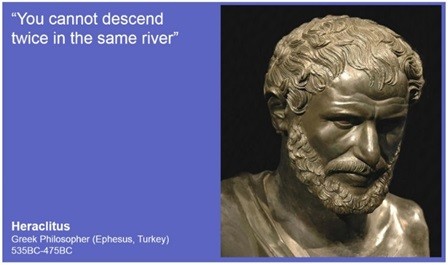By referring to Corporate transformation (to the extent of launching such initiatives in right shape since their inception), some recurring criticalities – about leadership and its basic features – will be highlighted, for preventing those trivial errors, that lack of experience might trigger.
Before anybody starts claiming to be knowledgeable enough, we should all agree that core challenge of change is in its nature itself. In fact, change is always about transforming a Corporate for a “new operating model”, hence uncertainty and inexperience are intrinsically embodied with this objective.
Experience helps, but to recycle what was done does not ensure success, as circumstances of re-use are never the same as first-use, hence successful processes and organizations of the past may prove to be completely unfit in “untested/unprecedented” scenarios.
The fundamental question remains if there is enough transformation competence in the leadership and its team to face challenges at hands, with minimization of risks. Paradoxically, experience – without adequate mix of mental agility, improvisation and vision – may result in a severe drawback.
As Heraclitus pointed out brilliantly over twenty-four centuries ago, transformation is an immanent and permanent fact of life, and our extreme choices are always between making everything possible to succeed in it or accepting our unfitness and decline.
The pragmatic suggestion from a great leader of recent times – Jack Welch Jr. – is to be prepared for change, and better to anticipate the time when this might be forced, because conditions may be such that action is no longer a choice but an undeferrable obligation, regardless we are prepared or not.
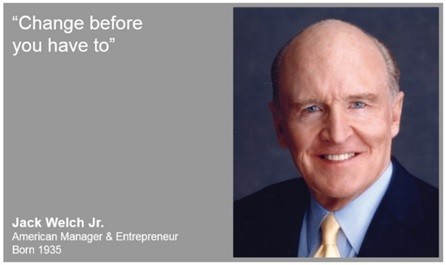
Up to recent past, transformation was especially about managing Corporate size and complexity but, unfortunately, in present times, additional hurdles such speed, and connectivity (to other complex systems) have powerfully taken the scene and turned into even more slippery ground the way to go through.
In short, when pushed for change, behavior of Corporates has started to be highly non-linear with effects that must be – as much as possible – prudently anticipated and leveraged (by engaged leadership and team), by being aware of their double-edge potential, as Edward Norton Lorenz suggests in his yet optimistic quote here below reported.
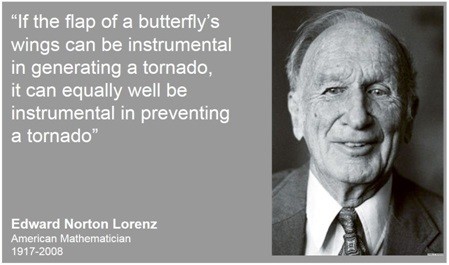
Let’s see in the following few elements of leadership applied to Corporate transformational scenario. Of course, the list is not complete, but awareness of this minimum set is an excellent point of origin.
Leadership and its components
A famous Italian journalist – Oriana Fallaci – declared that 21st Century is a time without “leaders”.
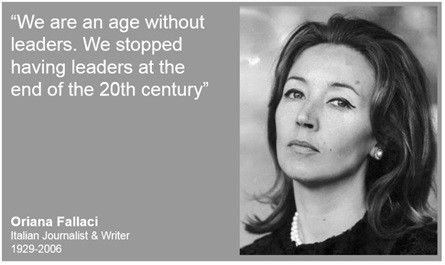
Maybe this statement is too sharp and unfair, but it suggests looking with additional attention around us, and inside ourselves, if we really want to give real significance to such a word for – like it or not – organizations need “leaders”.
Indeed, it is undisputable that Corporates need “leaders” to evolve in organizations with minimum “friction, confusion, and underperformance” (Peter Ferdinand Drucker), or even just to maintain their course in the right shape.
Fact is that it is hard in these days to find people fitting the evocative picture of “global gladiators”, as Alvin Toffler called some mighty personalities of the Eighties in one of his famous books [1].
While leaderships can have as many embodiments as their context of application, in our view, the main differentiating contributions of leaders remain: Vision, Action and Competence.
Vision
No vision, no direction. Hence, this is the first thing that leaders must share with own transformation team.
It sounds obvious that nobody can drive blind, but it is not obvious how to put together a consistent vision about your Corporate and its mission, when such Corporate is a very diverse conglomerate, which serves a too large spectrum of businesses and markets.
In such circumstances, either you break your Corporate in manageable portions, and let them go their way by maintaining only financial control, or you face the risk of defocusing and paralysis, as it is not easy to identify a center of gravity where to apply forces, because of too many players with own rightly different agendas, focus and priorities.
When too many different businesses stay under the same Corporate umbrella, the probability to have some of them going too fast, or too slow, against the pace expected by shareholders for the whole concern, is very high.
In fact, especially in these times of high volatility, businesses need to follow closely their own optimal trajectory, in line with specific needs and constraints set forth by their markets, customers and competitors of references.
While vision is irreplaceable by lesser substitutes, it is however insufficient without additional components, which enable, at all crucial level, the organizational engagement and drive.
It is natural that soft elements like culture and communication have different contents and modes if they are referred, for instance, to traditional heavy industries or to new “gig economy” activities.
These latter intrinsic aspects are crucial for successful propagation of vision across all the layers of the whole organization.
Hence, fundamental questions must be raised about effectiveness of traditional channels for communicating – within defined time constraints – right message and direction about where the Corporate is expected to go, by when, and WHY we must all be there.
Is a structured wave of press communique enough? Do we think that a set of recurring confcalls will suffice? Do we use mainstream social media, or do we go on internal blogs and platforms? Do we organize waves of workshops to evangelize first those expected to be the change agents (and let them go to engage others)? Do we execute a mix of all the former approaches plus…?
Without a strategy, based on adequate awareness, any decision will be a random decision and any outcome will be random as well.
In summary, an excellent vision that is not able to fly out from the Corporate Board room – and reach consistently and convincingly every employee – will be useless and will not turn into reality.
Action
Once vision is set, a leader calls for action, acts and facts. This is exactly the difference between a leader and any other thinking animal.
While philosophers, consultants and brains workers can certainly conceive too the best possible scenarios, only the leaders feel compelled, urged to make it happen and to engage by any means own organization to buy the idea and own it.
This is what probably meant Donald H. McGannon in his short accurate quote (see picture below).
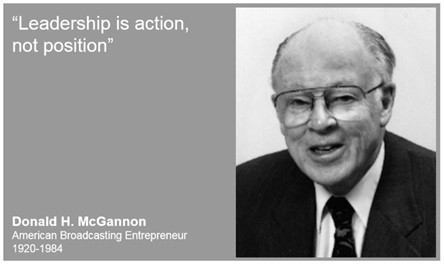
On the other hand, we must not disregard the recommendation by Ernest Hemingway to distinguish between motion and action.
This is especially important when action applies to large organizations, for which “motion” without the ingredients of intelligence, finality and convenience is unsustainable, because of their unavoidable inertia and limited maneuverability, in comparison with smaller and more agile structures.
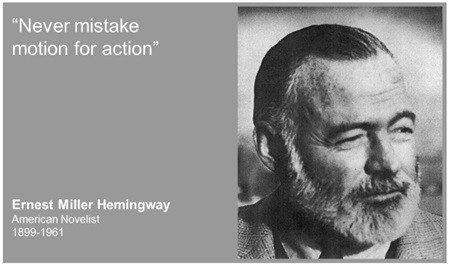
However, a leader with vision and capacity to trigger action can be very dangerous if not equipped with the next quality, which prevents – or at least – limits the risk of unrecoverable errors.
Competence
A leader appointed to set a vision, and to move own organization to get there, is expected to be credible, to be really (or at least enough) trusted.
Indeed, one of the most difficult elements to assess in the leadership is certainly “competence”.
The more a Corporate is complex and articulated, the more the meaning of “competence” shifts from “know-how” to “know-who”, and the time span for the assessment of such competence in leaders escalates from days to years, because measurement is done on strategy execution, in addition to monthly/quarterly reviews.
The extension of such period of assessment, combined with inertia of a large organizations, adds a huge risk factor that is potentially life-threatening, when a Corporate must turn direction in the unfortunate circumstance in which own leader proves to be wrong.
Certainly, a good leader of a large organization does not micro-manage and knows precisely to whom assign the responsibility of crucial domains of activities, while keeping in own portfolio only those prerogatives that absolutely must rely on his/her first-hand decisions and actions.
Fitting in this position – in the stream of processes and activities – requires complete understanding of own organization and respect of prerogatives once these are given to empowered managers.
George Smith Patton III explains clearly this concept in his quote in the picture below and adds an element – ingenuity – which has been always valid in human evolution, and it is in these days of uncertainty and volatility even more valuable.
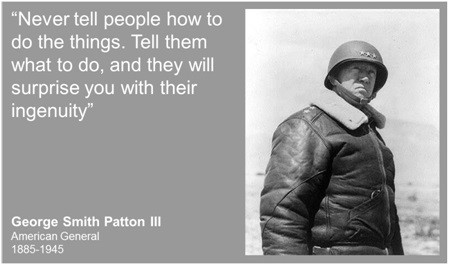
The most critical issue with assessment of competence is by-product of another quality of leadership, which is so important – and given for granted – that was not even mentioned so far.
In fact, leadership goes always together with (self)confidence.
Unfortunately, when confidence is not supported by competence, we may incur in the worst-case scenario, called Dunning-Kruger effect, which is described in the following picture.
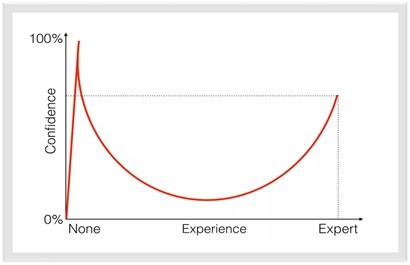
Very simply, this curve explains how confidence changes with accumulation of individual experience (which is supposed to build knowledge).
Someone who is fully ignorant has normally no confidence at all for a given subject, but initial experience may immediately trigger an overshot of confidence, because lack of enough knowledge may lead to underestimation of challenges and risks.
With accumulation of experience, typically confidence starts reducing with growing of awareness but, beyond a certain threshold of experience, confidence starts growing again, while ignorance finally turns into proficiency, when people become “expert”, by re-gaining high confidence.
Our typical transformation leader will normally start somewhere between the overshoot and the expert condition, but nothing grants that his/her condition will certainly go in the right direction.
In fact, as stressed at beginning of this article, transformation is always about something “new”, hence adaptability and learning skills will be the compass and the needle for orienteering our leader to point the proper way.
There is no certainty that whoever starts transformation will be able to land it properly, but some warning signals may raise the level of attention.
For instance, avoidance of complexity, minimization of “red tape”, emphasis on speed, careful selection of users’ and customers’ advocates will provide higher probability of success compared to choices going in opposite sense.
Boundary conditions
Corporates move in a real world made of intrinsic and extrinsic elements, which altogether make their boundary conditions. Such conditions may include, but they are not limited to, management quality, own portfolio of product or services, structure of finance, competition, customers, economy and political environment.
Any Corporate may influence to a large extent some internal – and few external – boundary conditions, but many other may be fully uncontrolled and – too often, unfortunately – even unforeseeable or beyond imagination.
For example, a pervasive boundary condition like internet was never mentioned by Alvin Toffler, a futurologist, in his book written in 1990 [1], while only five years later – in 1995 – his colleague John Naisbitt was not only referring to this new global ecosystem (at that time used by ca. 15 million people), but even able to shoot a forecast for internet users’ population to over 1.5 billion, by year 2001, being a bit too optimistic, as this figure was reached around 2008 [2].
Corporate transformation is about re-engineering organizations, processes, cultures, technological platforms and people for adapting in optimal way to such complex of changing boundary conditions.
Certainly, consultants may be not only welcome, but strictly necessary to offer their experiences, especially about the rest of the world (outside the Corporate’s landscape), and to increase the critical mass of competence, which is needed to have the transformation process activated and sustained.
On the other hand, consultants have not to take the lead because – simply – they do not know the Corporate as well as necessary, in depth and wide, as it should be known by the Corporate managers in charge of driving transformation.
In short, consultants can help on support for extrinsic conditions, but only Corporate managers can really contribute for the awareness on intrinsic conditions (if necessary again helped by consultant, to be equipped with proper tools and methodologies for easing investigations, collection and analysis of findings).
In other terms, before you decide where to go, and through which direction, it is damn better that you know from where and how you are starting your travel, and which is the weather forecast along the route.
How timing, position and momentum matter
A simple model to visualize the implications of boundary conditions is showed in following picture, where there are three Corporates – A, B and C – which compete in the same market – the sphere – with the aim to first reach T, an ideal spot on the sphere that maximize their fit to market conditions at time t1.
For simplicity, a g force is there to pull them down, and – in the picture – such g may potentially help Corporate A, if A takes the right direction, while it works clearly against Corporate B.
Because of own position, given the picture at t1, Corporate C seems to have such a huge disadvantage against its competitors A and B, as it is on the other side of the globe in relation to target T.
Because of their boundary conditions, intrinsically and extrinsically, A, B and C start with different odds, but it is not possible to anticipate who, if any, will reach T.
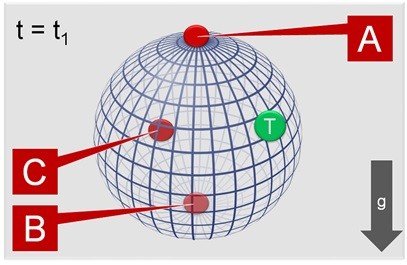
Daniele Rizzo © 2019
In fact, for simplicity, the picture above does not show their individual vector speed, at time t1, and such element of the boundary conditions may make the difference.
For instance, A may go high speed in the wrong direction and possibly find itself next in the position of B at t1, thus obliged to have a complete circumnavigation of the sphere before reaching T.
While A makes own way to T, B could have started with enough momentum in the right direction and go to arrive in T – earlier than A – just because its starting point is at shorter distance compared to the final length to be covered by A (in the assumption that A takes a wrong direction, losing in this way own initial advantage).
This hypothetical scenario shows how important is the responsibility of the leaders of Corporates A, B and C, as they must decide what to do (timing, direction and speed) at time t1 on the basis of their degree of awareness of boundary conditions.
If we assume that nobody moves, later at time t2, market may evolve from a sphere to a saddle (see following picture) and our Corporates A, B and C can find themselves in completely different conditions in relation to T.

Daniele Rizzo © 2019
If we reason as we did for the sphere, maybe Corporate A has still an advantage against B and C, but all in all its competitive position seems to be weaker than it was at time t1.
Maybe leader of Corporate A has lost the window of opportunity to reach target T before B and C.
By means of this simple representation, it is immediate to understand that time never plays a neutral role and that – at the best of our knowledge – it is vital to recognize the window of opportunity and make our best to fly through is until it is open.
Conclusions
While the leader is always responsible for the failure, the reverse about getting the credit for success is not true. Friedrich Nietzsche called success a liar, as very often we do not know why we win.
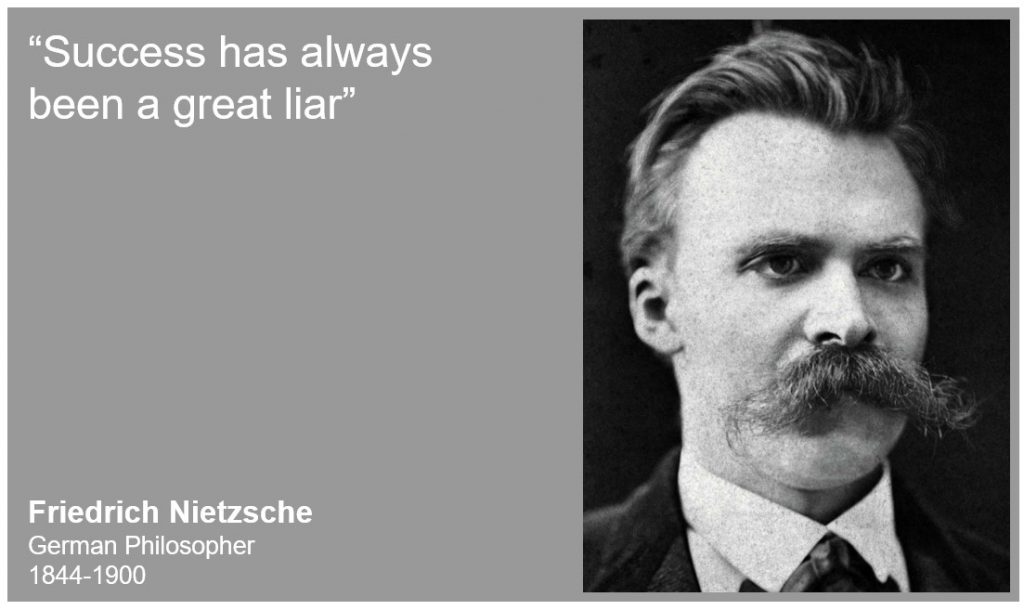
We would like to finish by mentioning courage which is – like confidence – another quality that cannot be missing in true leaders.
In fact, courage is precisely what urges the capable leader to mobilize the organization despite his/her precise awareness of risks (calculated thanks to own competence).
Finally, Corporate transformation is often like the fly of a bumblebee.
As May Kay Ash said, it should not fly according to the laws of aerodynamics, but because the bumblebee does not know them, it flies anyway.
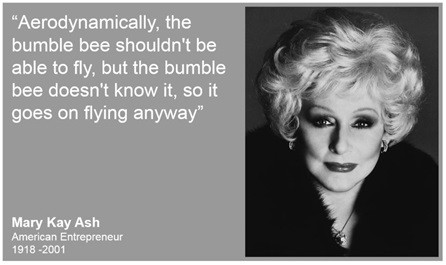
References
[1] “PowerShift: Knowledge, wealth and violence at the edge of the 21st Century”, Alvin Toffler, Bantam Books, 1990;
[2] “Global paradox”, John Naisbitt, Avon Books, 1995.
Article by channel:
Everything you need to know about Digital Transformation
The best articles, news and events direct to your inbox
Read more articles tagged: Change & Transformation, Featured, Leadership





